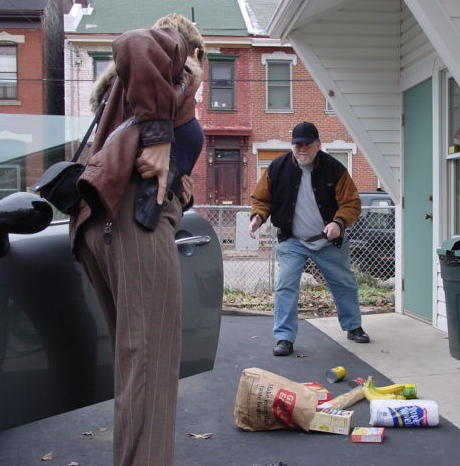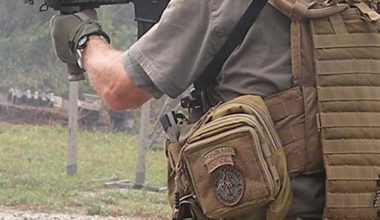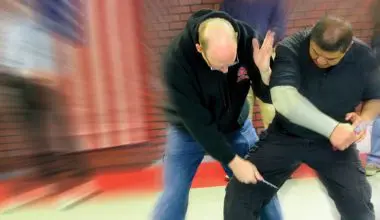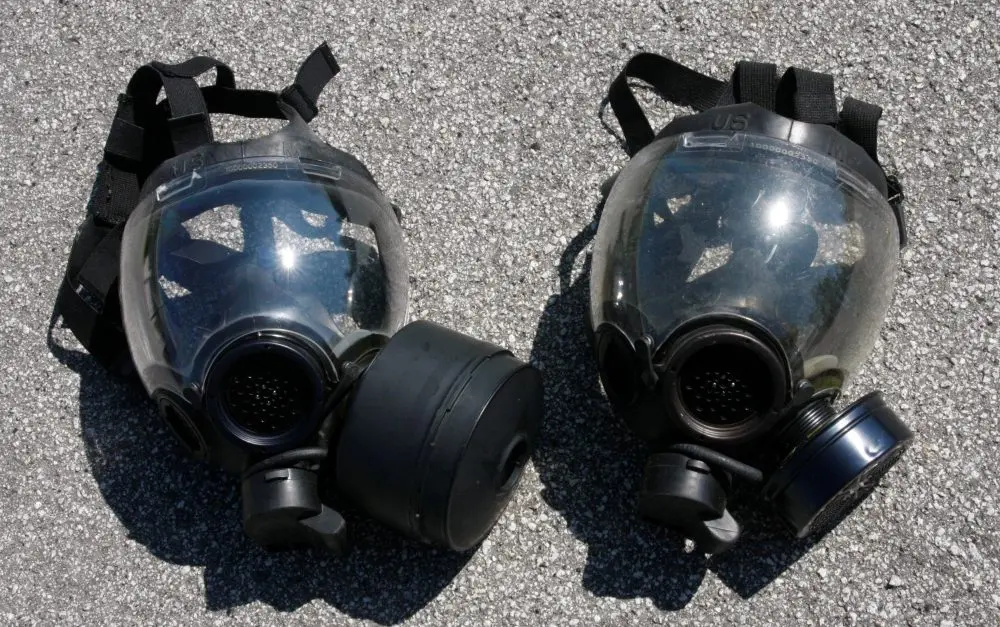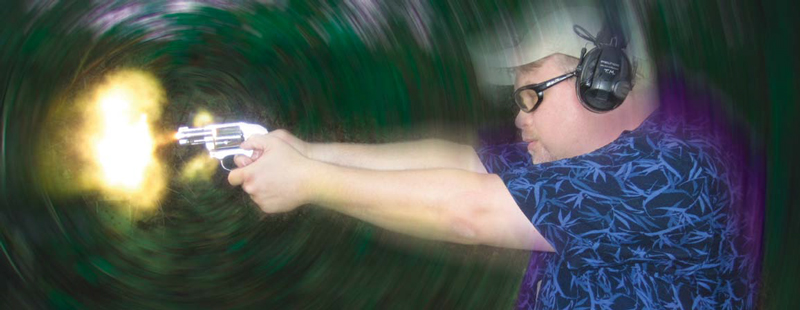
The autoloader world was also in upheaval, with the U.S. military dumping the 1911 and the new Glock 17 threatening to “defeat metal detectors.” Even Dirty Harry dropped his S&W 29 in San Francisco Bay and replaced it with a .44 Automag.
Twenty-five years later, gun rags are free of the debate that kept us focused through the Carter and Reagan years.
I knew something was up when students who had never held a revolver began showing up for classes, or when I’d run into police officers who had no idea how to open a J-Frame to see if it was loaded. I have waited in a NY airport while a young State Trooper tried to inspect my 649 to make sure it was unloaded, and watched as he struggled with his frustration and lack of understanding. After asking if the cylinder latch was the safety, the officer handed me what could have been a loaded gun for me to show clear.
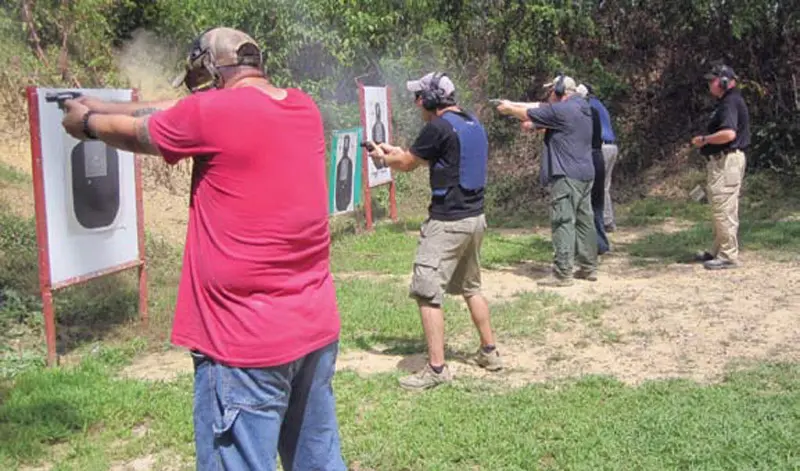
Table of Contents
GENERATION KNOWLEDGE GAP
What many of us have taken for granted has become arcane to others. The majority of new shooters are buying an automatic the first time out. Unless they plan on hunting, need to stop threats that walk on four legs or have a nostalgic bent, they may never handle a wheelgun in their lives. This is fine for most people, but for a law enforcement officer or practitioner of the defensive arts, it is unacceptable. Basic knowledge of the operation and safe deactivation of potential threats you may face on the street is a must. One day, you may have to use someone else’s gun to defend yourself, and you’d best be familiar with its operation.
Unless you are attached to an agency progressive enough to still issue revolvers, you may discover that finding training in their use can be a challenge. Most schools are geared toward students using high-capacity automatics. Even 1911 shooters find themselves behind the curve, reloading once or twice for drills that a Glock shooter can perform with ammo to spare.
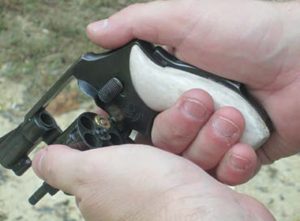
There are a few places to go for this lost knowledge. One is Rangemaster in Memphis, Tennessee. I first met owner Tom Givens at the National Tactical Invitational in 2007, where he gave an interesting presentation on the defensive shootings that his students had experienced the previous year. To date he has had 56 students win their gunfight—an experience that happens with a degree of regularity in Memphis. When I called to inquire about setting up his revolver course in my area, he sounded genuinely excited, as there seems to be little interest in “wheelies” these days.
HARDWARE
Total revolver sales account for only 25% of the U.S. handgun market today. Most revolvers currently sold are easily concealed, five- or six-shot J-Frame sized guns. Old Timers knew them as the S&W Chief’s Special, Centennial or Bodyguard, or the Colt Detective Special, Agent or Cobra. Today the names have been replaced with model numbers, but the guns are still recognizable to someone who may have carried one in the 1950s, ’60s or ’70s.
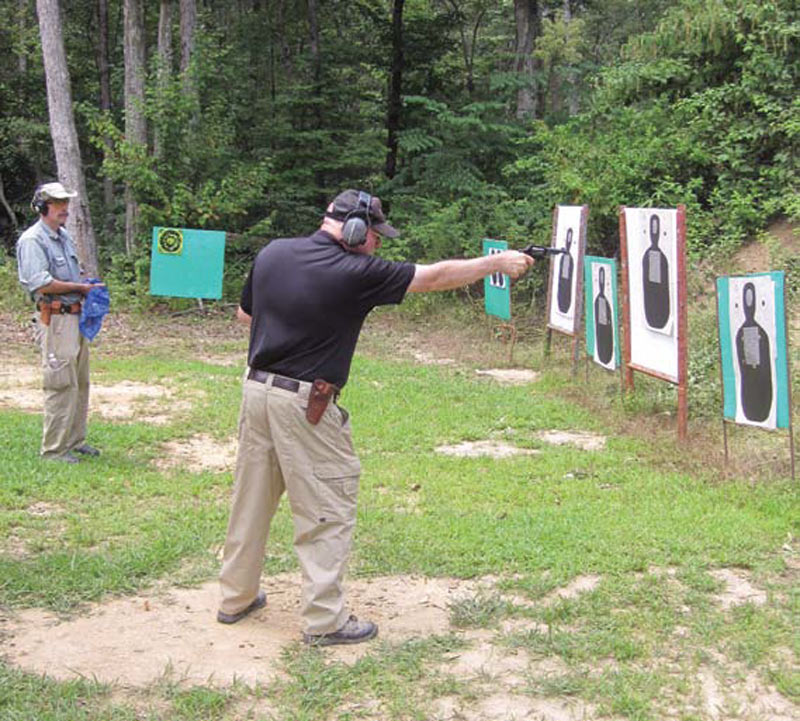
Over the years, new manufacturers entered the field, with Ruger and Taurus adding products to the lineup. The revolver’s continued prosperity among today’s selection of superior alternatives can be attributed to a few misconceptions, the most egregious being that a five-shot J-frame is the simplest and easiest gun to carry, despite evidence to the contrary.
Having lived in New York for years, I had been exposed to a plentiful supply of surplus revolvers. Until the late 1980s, NYPD and other state agencies used Smith & Wesson revolvers of various configurations. In fact, New York State Corrections issues the S&W Model 10 to this day. (They passed on free Glock 17s when the NYSP went to the .45 GAP.)
The result is a large quantity of inexpensive revolvers left by retiring officers in specialty shops like Collector Rifle & Ammo in Hopewell Junction, New York, which is where I picked up my latest project gun. On my last visit I had dozens of inexpensive used wheelguns to choose from, mostly fourinch Model 10s or two-inch Model 36 Chief’s Specials. There were a few Colt D frames to choose from, but I couldn’t resist the less common two-inch roundbutt Model 10 in the display case.
This project gun was a 1970s vintage heavy two-inch barrel with smooth combat trigger. One night I knocked the rust off it with some steel wool and smoothed out the nicks and dings it had from years of service. I was feeling adventurous and bobbed the hammer and added Eagle Secret Service grips donated by a friend. The heavy K-frame’s advantages are the extra round offered by the six-shot cylinder and the ability to easily digest the hottest +P ammunition available.
Rifle Dynamics in Las Vegas then modified the snubby six-shooter by milling off the original ramp sight and adding an XS Sight Systems Big Dot sight while opening up the rear sight channel to match. It made for a blazing fast sight picture.
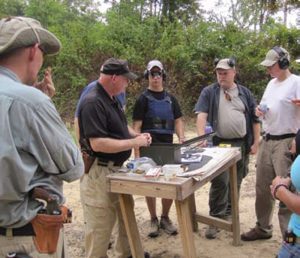
GEAR PREP FOR CLASS
With these modifications to the Model 10, I was ready for the Rangemaster course. Tom Givens had encouraged us to bring out the backups, so I also brought my first-year production S&W Centennial and my .357 S&W 649. The stainless 649 .357 also wore an XS front sight. Just in case I had any problems, I also brought a four-inch .357 Model 66, but I had so much fun with the snubby Model 10 that the Model 66 never left the car.
Knowing that I would be firing about 500 rounds throughout the day, I opted to use 125-gr. TMJ .38 Special ammunition. The completely jacketed projectile eliminated any potential leading issues, and the lighter weight bullet was easier on the hand than a 158-gr. load would have been. The shorter barrels prefer bullets in the 110- to 135-gr. range in order to achieve the best velocity possible in the shorter tubes.
My primary holster for the class would be a Don Hume belt slide, chosen to fit both of my K-frame guns and because it doesn’t rely on a thumb snap to retain the hammerless Model 10. The Centennial was carried in a vintage Bianchi 209 shoulder rig, and the 649 in a DeSantis crossdraw. The other eight students carried appendix, strong side, pocket or on the ankle.
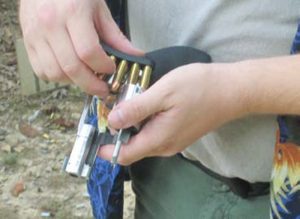
SOFTWARE
This was my first Rangemaster class and I wasn’t sure what to expect. I was encouraged by the no-baloney safety brief and declaration of a hot range (guns loaded at all times).
Givens was up front about the viability of the revolver as a fighting tool, which is to say that it is inferior to the automatic in every way. Revolvers are more expensive, thicker and harder to conceal, and have a more complicated manual of arms if you intend to shoot more than what is contained in the gun.
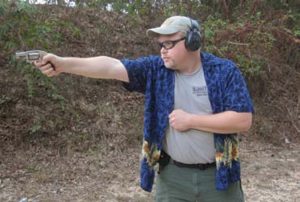
Revolvers are more sensitive to dust and dirt, and dropping one on its side can put it permanently out of action. Using the wrong ammunition can lead to bullet jump, where the projectile in one chamber begins to move forward from heavy recoil. If it makes it beyond the chamber mouth, it will lock up the gun. In class we actually had one student’s gun lock up from a high primer. If an auto-loader malfunctions, immediate action drills can be done with your hands. If a revolver malfunctions, it is often a true jam requiring tools to get it back into firing condition.
Tom went on to say that if you carry a revolver for defense, carry a second or third too. It will be faster than reloading, and a lightweight J-frame isn’t much bulkier than the speed loader made to feed it.
On the firing line, we went through a few simple drills to establish where we were as a group, just in case “That Guy” was on the line. Tom had explained that this was going to be a revolver-skills specific class and not one in which we would be doing much of the dynamic movement that his other classes normally require.
Initial drills were run with us reloading loose rounds from our pockets, and we became proficient with this method before progressing to loading devices. Speed loaders and Speed strips were then used for the remainder of the class. Tom showed us techniques to effectively use these instruments to cut our reloading times.
Throughout the day, it became readily apparent that attempting to reload a wheelgun under stress while keeping the threat in sight was practically impossible. The most viable option would be a “New York reload,” which for the uninitiated means grabbing another loaded gun and pressing the fight.
The revolver is a fine motor skill piece of equipment, while the automatic can be run using gross motor skills. When fingers turn into flippers, either pull another gun or start running. The most cursory review of the Newhall Incident in California or the FBI’s 1986 gunfight in Miami will substantiate this opinion.
STANDARDS
The shooting drills started at a sedate pace for students to master the correct manipulations, but as the day progressed, so did performance expectations. Unlike many training schools, Rangemaster has a series of qualification drills that students need to pass. Not only is this verification of the students’ skill level, it also serves to raise adrenaline and anxiety levels to more effectively simulate the effects of a violent confrontation.
Once the timer came out, reloads started dropping in the dirt and the nice tight groups started opening up. Hands began bleeding from sharp edges on the guns or from striking the stubby ejector rods with enough force to clear empties from the dirty chambers. Students had to increase their rate of fire to complete drills in time, and guns became uncomfortably hot to hold during reloads.
Between shooting drills, Tom held class sessions as students replenished ammunition and pushed plenty of fluids. Topics included the development and selection of holsters, ammunition and grips. Tom had also brought a selection of revolvers for the class to check out, from small snubbies to larger duty-sized guns. The class was shown how revolvers were originally designed to be fired primarily in the single-action mode with double-action used only in an emergency.
To this day, factory grip design reflects this 19th century methodology, despite the move toward DA-only and hammerless designs. The aftermarket solution was originally the Tyler T-Grip, now augmented by quality grip choices from companies such as Pachmayr, Hogue, and Eagle.
Tom handed out samples of different factory rounds for students to try in their guns. This exercise allowed students to try a variety of high-performance loads without having to spend $120 on carry ammo samples. Recoil and point of impact were noted for each round, and more than a few minds were changed by the results. Ammunition selection for extremely short barrels becomes critical to terminal performance and should not be glossed over.
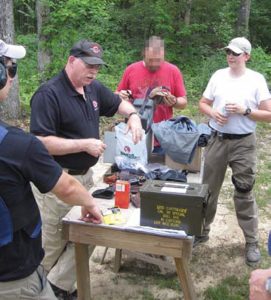
Back on the line, we ran the usual familiarization drills: one-handed strong side and one-handed support side. All reloads were done strong side as there was not enough time in a one-day class to develop the skills needed to learn a one-handed or support-side wheelgun reload. Transitioning to a second gun is preferable.
As the day progressed, we ran the qualification drill a few more times. Tom continually emphasized accuracy—any hits outside the heart or brain box were considered misses. We were taught that, due to the limited velocity, sight radius, range and terminal performance, any handgun is a compromise solution. We were compounding those factors by using guns with even more limitations— shorter sight radius and smaller sights, shorter barrels, smaller grips and limited capacity.
On paper, a two-inch, five-shot .38 Special is really suboptimal as a fighting tool beyond bad-breath ranges. Even then it is statistically a “1.5 bad-guy gun,” meaning it holds enough rounds to engage one and a half attackers according to available data on rounds per stop. In practical use, the snubby has performed beyond its supposed limitations.
CONCLUSIONS
I’ve taken courses at a lot of schools and have taught at two training organizations. I’ve had many great experiences and a few where I came away with nothing but a sense of regret. Training with Rangemaster, and in particular Tom Givens, ranks as one of my better experiences in the training industry. His no-nonsense attitude, “big boy” rules, wealth of experience and scientific approach to gunfighting make him a “must do” on the training schedule. I’ll be making my way to Memphis for additional sessions with the Rangemaster staff.
As for the revolver? I’ll continue to carry my wheelguns as backups to one of my automatics. Any gun can malfunction, and the only solution to that problem in the middle of a fight is to have another gun handy. We learned that the very definition of an optimist is a guy carrying a J-Frame and a speed strip.
I’m a pessimist by nature, so if you see me, I’ll probably have a Glock, a spare mag and a J-Frame or two….

